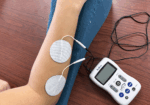了解职业治疗继续教育
什么是职业治疗继续教育?
职业治疗继续教育是指结构化的学习活动,旨在帮助职业治疗师 (OT) 保持专业能力,拓展技能,并及时了解医疗保健领域的进展。这些课程通常以 继续教育学分(CEU) 或者 专业发展单元(PDU) 并且是大多数美国州维持执照所必需的。
职业治疗师应在整个职业生涯中参与继续教育,以确保安全有效的治疗实践。这一终身学习过程弥合了学术知识与当前现实需求之间的差距。
为什么职业治疗师需要继续教育学分 (CEU)
CEU 的职责是:
- 确保职业治疗师保持高标准的护理
- 让从业者了解新技术和治疗策略
- 促进道德决策和法律合规
大多数许可委员会要求 10 至 36 小时的 CEU 在每个驾照续期期间。各州的要求各不相同,因此请务必与当地驾照颁发机构核实。
美国的法律和许可要求
美国各州都有各自的CEU规定。例如:
| 状态 | 每个续订期所需的 CEU | 更新周期 |
| 加利福尼亚州 | 24小时 | 每两年 |
| 德克萨斯州 | 30小时 | 每两年 |
| 佛罗里达 | 26小时 | 每两年 |
| 纽约 | 36小时 | 每3年 |
除了一般的继续教育学分 (CEU) 外,一些州还要求学生修读伦理学或法学专项课程。请查看您所在州教育委员会的网站,获取最准确的信息。
职业治疗师继续教育的益处
提升专业知识
继续教育使治疗师能够:
- 学习最新的临床技术
- 整合循证实践
- 随时了解法律和政策变化
遵守州和国家委员会的规定
合规并非可有可无,而是法律要求。持续修读继续教育学分 (CEU) 可避免执照被吊销,并保障您的执业权利。
改善患者治疗效果和护理标准
持续学习的治疗师能够取得更佳的成果。无论是帮助中风患者恢复运动功能,还是帮助自闭症儿童,持续教育课程 (CEU) 都能提升您提供改变人生的护理服务的能力。
职业治疗师的不同类型的CEU
在线与面对面的CEU课程
| 格式 | 优点 | 缺点 |
| 在线的 | 灵活、实惠、自定进度 | 有限的实践操作 |
| 亲自 | 互动式体验式学习 | 价格较高,需出行 |
专业认证和高级培训
示例包括:
- 手部治疗认证(CHT)
- 神经发育治疗(NDT)
- 感觉统合与实践测试(SIPT)
这些认证可以提升您的信誉并为您打开高薪职位的大门。
研讨会、研讨会和会议
现场活动提供与专家和同行的直接互动。热门的年度会议包括 AOTA INSPIRE 会议,其中包含数百场涉及新 OT 实践的会议。
顶级认证机构和平台
AOTA:美国职业治疗协会
AOTA 认可的提供商在全国范围内获得认可。AOTA 还提供其自己的继续教育课程、现场网络研讨会和年度会议。
NBCOT:国家职业治疗认证委员会
NBCOT 提供续订指南并跟踪 PDU。您可以在其官方网站上找到在线资源和工具,帮助您规划 CE 之旅。
如何选择合适的继续教育项目
与你的专业或职业目标保持一致
不要仅仅为了满足要求而选择课程。选择符合以下条件的课程:
- 儿科
- 老年病学
- 心理健康
- 骨科康复
评估课程可信度和认证
始终验证:
- 该课程已获得 AOTA 或州委员会批准
- 它提供结业证书
- 由合格的教师授课
成本与价值:做出明智的决策
$20 网络研讨会可能比 $400 线下课程提供更多实用见解。投资前,请权衡质量、评价和便利性。
获得和追踪 CEU 的步骤
如何注册并完成 CEU 课程
- 寻找董事会批准的供应商
- 注册并支付课程费用
- 参加或完成该项目
- 通过所有必需的评估
- 获得结业证书
记录工时并保存证明
保存包括以下内容的数字或物理记录:
- 课程名称
- 完成日期
- CEU 小时
- 提供商详细信息
- 结业证书
续订时间表和截止日期
在日历上标记执照到期日期,并提前规划好继续教育学分 (CEU)。逾期续期可能会产生额外费用,甚至导致执照被吊销。
OT CEU 规划中应避免的常见错误
错过截止日期和学分不完整
即使缺掉一个学分,也可能会阻碍你的练习。设置提醒并提前规划。
参加非认证课程
如果课程未获得 AOTA 或您所在州委员会的批准,则该课程将无效,从而浪费您的时间和金钱。
忽视特定州的要求
每个州都有不同的规定。例如,有些州要求:
- 伦理学课程
- 实践培训
- 与您的专业相关的课程科目
职业治疗的继续教育趋势
远程医疗和数字护理培训
随着远程医疗成为标准,学习如何远程提供护理至关重要。
实践中的多样性、公平性和包容性
注重包容性护理方法的课程越来越重要,尤其是在儿科和心理健康职业治疗领域。
职业治疗专业人士的国际继续教育
海外机会和全球认证
在国际上执业的职业治疗师可以通过以下方式获得各国认可的认证 WFOT(世界职业治疗师联合会).
非美国执业医师面临的挑战
国际职业治疗师可能面临以下障碍:
- 凭证验证
- 不可转让的 CEU
- 语言差异
国家间相互认可
一些 CEU 提供商提供全球认可的认证,简化了加拿大、英国和澳大利亚等国家之间的过渡。
职业治疗继续教育常见问题解答
1. 我需要多少 CEU 来更新我的 OT 许可证?
大多数州要求每1-3年获得20-36小时的驾驶执照。请咨询您所在州的驾驶执照委员会。
2. 职业治疗师可以接受在线 CEU 吗?
是的,如果该课程得到董事会批准并符合您所在州的标准。
3. 我可以结转未使用的 CEU 学分吗?
有些州允许这样做。请与您所在州的委员会确认。
4. 如果我错过了 CEU 截止日期会怎样?
您可能会面临滞纳金、执照吊销或需要重修所有课时。
5. 我如何证明我完成了 CEU 课程?
保留您的结业证书和课程详细信息记录以供审核。
结论:通过终身学习确保你的OT职业未来发展
职业治疗的继续教育不仅仅是一个需要打勾的选项,更是通往职业发展、更优质的患者护理和职业成就感的路线图。选择合适的继续教育课程,保持合规,并避免常见的陷阱,就能确保你在医疗保健领域回报最高的领域之一拥有蓬勃发展的职业生涯。
更多阅读内容
3 种家居用品,适合 9 种不同的手部护理活动
您是否正在努力开发新的治疗理念,甚至是虚拟手部治疗就诊的想法?考虑以独特的方式使用客户家中的物品可能就成功了一半。这篇博文介绍了 3 种日常用品的 3 种不同使用方法。项目编号 1:网球(手部治疗......
阅读更多一项比较早期主动运动计划的随机临床试验:早期手部功能、TAM 以及对 V 区和 VI 区伸肌腱修复的相对运动延伸计划的矫形器满意度
作者:Brittany Day Collocott SJ、Kelly E、Foster M、Myhr H、Wang A、Ellis RF。一项比较早期主动运动计划的随机临床试验:早期手部功能、TAM 以及对 V 区和 VI 区伸肌腱修复的相对运动延伸计划的矫形器满意度。手部治疗杂志。 2019.doi:10.1016/j.jht.2018.10.003 瘦子-这是……
阅读更多桡神经麻痹:导致手腕下垂的瘫痪
桡神经麻痹-治疗
阅读更多手部治疗:小儿孟氏骨折的保守治疗
儿童孟氏骨折的保守治疗 儿童孟氏骨折包括约 2% 儿童肘部骨折,涉及尺骨近端骨折并伴有桡骨头脱位(图 1)。孟氏骨折的主要问题包括治疗(儿科孟氏骨折治疗)和桡骨头的重新定位,因为如果留下……
阅读更多注册即可直接将更新发送到您的收件箱!
注册我们,我们将定期向您发送有关手部治疗的所有内容的博客文章、每次上传新视频和教程时的通知,以及讲义、协议和其他有用信息。






